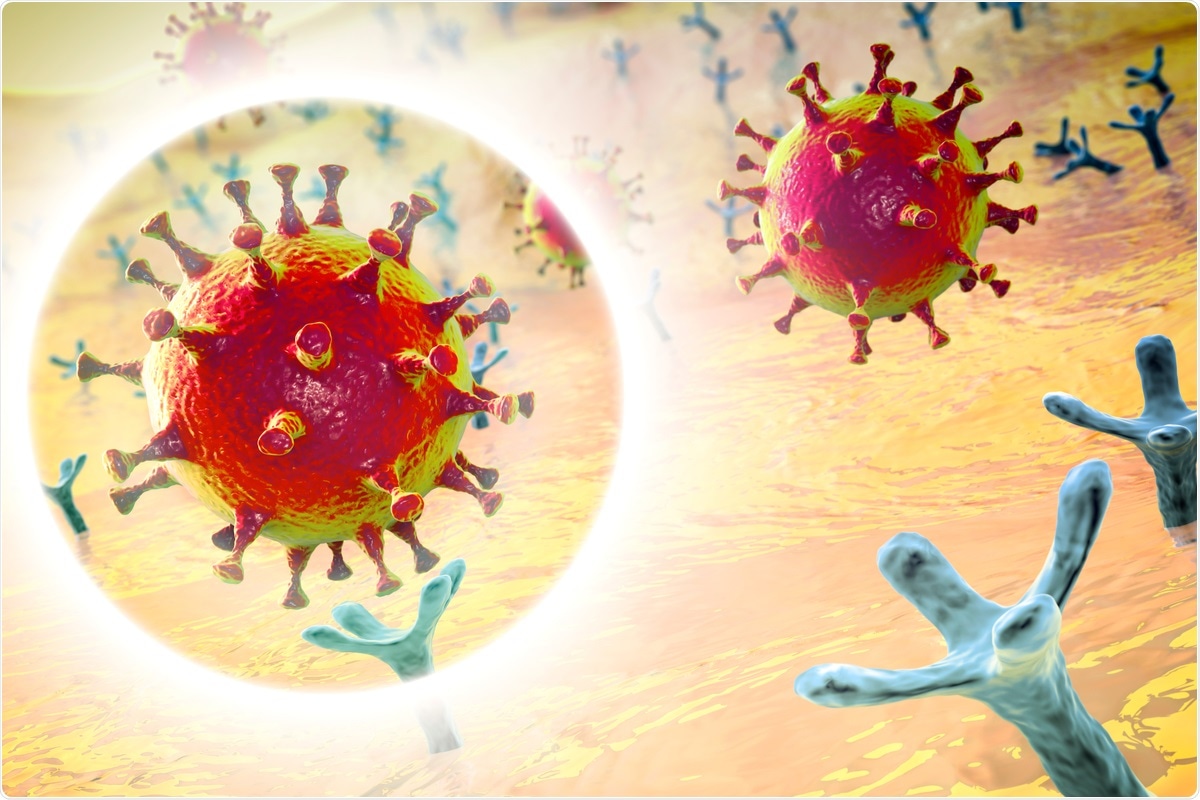In late December 2019, the severe acute respiratory syndrome coronavirus 2 (SARS-CoV-2) was identified as the causative agent of the coronavirus disease 2019 (COVID-19). SARS-CoV-2 is the seventh human coronavirus to be discovered and belongs to the Sarbecovirus subgenus of the Betacoronavirus genus in the Coronaviridae family.

Study: Trypsin enhances SARS-CoV-2 infection by facilitating viral entry. Image Credit: Kateryna Kon / Shutterstock.com
Background
SARS-CoV-2 is a single-stranded positive-sense ribonucleic acid (RNA) virus with a large, enveloped genome. SARS-CoV-2 has 16 nonstructural proteins (nsp1–nsp16), four classical coronaviral structural proteins including the spike (S), envelope (E), membrane (M), and nucleocapsid (N) proteins, as well as many accessory proteins in its genome. During SARS-CoV-2 infection, the external S protein anchored to the viral E protein interacts with the angiotensin-converting enzyme 2 (ACE2) receptor to promote viral entry into host cells.
Recent studies have found that the Vero E6 cell line overexpressing transmembrane protease serine 2 (TMPRSS2) exhibited a greater viral titer than parental cells in an infection experiment with SARS-CoV-2, thereby demonstrating the importance of this protease for SARS-CoV-2 fusion capacity and infectivity. Trypsin is another protease that has been found to aid in the fusion and infection of human and animal coronaviruses and is required for the multiplication of swine enteric coronaviruses such as porcine endemic diarrhea virus (PEDV) and porcine deltacoronavirus (PDCoV) in vitro.
In a recent Archives of Virology study, exogenous trypsin treatment was found to boost SARS-CoV-2 infection in Vero E6 cells and promote viral multiplication in cultured cells.
Study findings
None of the trypsin dosages tested in this study caused detectable cell death, according to the 3-(4,5-dimethylthiazol-2-yl)-2,5-diphenyltetrazolium bromide (MTT) cell viability assay. At 24 hours post-infection (HPI), the authors used virus titration to measure virus production.
Regardless of whether trypsin was present or not before infection, viral yields were constant, with a mean titer range of 106.53–106.73 50% tissue culture infectious dose (TCID50)/ml. The strength of the cytopathic effect (CPE) was also monitored for SARS-CoV-2 replication, which was validated by immunofluorescence assay (IFA) employing an anti-N-protein monoclonal antibody (MAb) at 24 HPI.
When compared to the untreated control, cells pre-treated with trypsin prior to viral infection showed no effect on SARS-CoV-2 infectivity at any of the test concentrations. Furthermore, introducing exogenous trypsin during the one-hour inoculation periods had no effect on SARS-CoV-2 propagation in cell culture. Thus, trypsin therapy before or during infection had no effect on SARS-CoV-2 replication in cells.
In the presence of 5 µg/ml of trypsin, the greatest viral titer of 107.52 TCID50/ml was achieved, which was one log greater than the control mean titer. When SARS-CoV-2-infected cells were cultured in the presence of trypsin, CPE and IFA analyses revealed that virus infectivity increased.
Vero E6 cells were inoculated with ten-fold serially diluted SARS-CoV-2 and kept in the presence or absence of trypsin in another experiment, whereas IFA was used to visualize infected cells. The researchers discovered that when Vero E6 cells were propagated with trypsin, the number of infected cells was more than ten-fold higher than when the cells were propagated without trypsin.
The researchers then investigated whether trypsin helps SARS-CoV-2 enter cultured cells. To this end, they employed a proteinase K infection assay to measure the rate of virus attachment and penetration by quantifying bound and internalized virus particles, respectively, to set the parameters for the viral internalization assay used to monitor SARS-CoV-2 entrance.
Vero E6 cells were infected with SARS-CoV-2 for one hour at 4°C and then treated with proteinase K at various doses for 45 minutes at 4°C to test the efficiency of proteinase K therapy in eliminating bound viruses. The SARS-CoV-2 genome copy number was determined by measuring the amount of virus attached to the cells using a quantitative reverse-transcriptase polymerase chain reaction (qRT-PCR) assay.
Proteinase K treatment was found to reduce the number of virions bound to the cell surface significantly, thereby implying that SARS-CoV-2 that is bound to cells is effectively eliminated by proteinase K treatment.
Implications
The results of the current study demonstrate that trypsin improves SARS-CoV-2 multiplication in cultivated cells and aids viral entrance by facilitating a direct fusion process at the cell surface. These findings suggest that depending on the presence of trypsin, SARS-CoV-2 may adopt distinct paths to enter cells. Surprisingly, the non-endosomal entrance of SARS-CoV-2 at the cell surface triggered by trypsin facilitated more effective infection than the endosomal pathway in the absence of trypsin.